- Joined
- Nov 14, 2013
- Messages
- 3,575
One of the most commonly asked questions on the FOG is about using Plug-It cords on other tools. This thread will attempt to answer all those questions. I will endeaver to get everything right the first time, but - contraty to poular belief - I'm not perfect.
[wink]
If I make a mistake I'm sure I will be promptly and appropriately corrected. I will come back and edit my initial post to correct any errors or omissions and to make sure that it's always the most up-to-date for future visitors.
First, lets get out of the way the fact that the Plug-It items I will be explaining are NAINA. They can, however, be obtained in many ways: picked up while in the UK, brought over by a friend, ordered and shipped from a UK dealer, or ordered from Amazon UK. I'd like to thank my UK friend for helping me get these as it was somewhat of a hassle for him. Thanks, UK friend!
Note: Of all the EU contries, basically it's only the UK that uses 110 volts (close enough to the US 120 volts for our purposes) so you typically can't buy the Plug-It's anywhere else in the EU. I've tried.
Legalese: You should not attempt an electrical modification to any tool unless you are qualified or competent to do so. Improper modification could result in the risk of damage to the tool, severe electrical shock, or death. The content posted here is strictly my own. It has not been accepted, approved, authorized, blessed, certified, checked, condoned, confirmed, encouraged, recommended, reviewed, sanctioned, substantiated, verified, vouched for, or warranted by Festool. There - that oughta hold 'em.
OK, with that out of the way let's get down to business. Here's what we're going to be starting with:
[attachimg=1]
In this photo are two Plug-it pigtails, a Plug-It replacement plug, and two US Plug-It power cords.
Clockwise from upper let they are:
1. 491144 plug it conversion-kit
UBS-PUR 360 plug it 240 V
Length 360 mm
[attachimg=2]
2. 491145 plug it conversion-kit
UBS-PUR 420 plug it 240 V
Length 420 mm
[attachimg=3]
The two Plug-It conversion-kits are IDENTICAL exept for the length of the cord that is supplied. One is 360mm, one is 420mm. That's the only difference.
Note: Both Plug-It conversion-kits are unlabeled as to gauge, but appear to be around 18 gauge. They are definitely NOT heavy-duty cords, so pick your conversion machines carefully. I would recommend them only for tools that draw less than 10 amps (1200 watts) continuous.
3. 489685 RK plug it, plug-it plug
Repair plug for replacement
[attachimg=4]
So first let's look at the Plug-It conversion and the US Plug-It cords that you will want to use them with. Here's the standard Festool 18 ga cord which is included with most sanders, jigsaws, the OF1010, and other 'smaller-draw' machines on the left, and the Plug-It conversion along side on the right:
[attachimg=5]
See the problem? The cord end (with the white center) has a triangular protrusion molded into it to PREVENT this light-weight cord from plugging into a higher-current machine. It will not mate with the Plug-It. So, we'll set that aside...
Now let's look at the Plug-It conversion on the left, along side the 16 ga. heavy-duty Festool Plug-It cord which is included with TS-75 and other 'higher-current' machines on the right:
[attachimg=6]
Looks good, but what if we try it out:
[attachimg=7]
SUCESS!! You now know WHICH Plug-It conversion fits on which US Plug-It cord. This works out particularly well if you have a 16 ga Plug-It cord strapped to your DE hose like many here do.
So what if you managed to damage or destroy the plug-it end on one of your Plug-it cords? That's where item #3 comes in.
The 489685 Repair Plug mates with any of your Festool tools that use the plug-it connector. It also mates with the Plug-It conversions:
[attachimg=8]
The 489685 Repair Plug cover unscrews and disassembles into 5 parts:
[attachimg=9]
Yes, I said FIVE. If you missed it, look closely at the bottom right side of the paper. There are (taped to the paper) two tiny hollow tubes (called ferrules) that you slip onto the end of your bare coper, then insert into the plug sockets and clamp down. Some people (like me!) prefer to solder them on, but it's not required.
[attachimg=10]
This ensures a much better electrical connection than you could get just clamping down on bare copper strands.
Edit 2014-11-6: European power cords (like Plug-Its) tend to use a brown-blue-green color scheme, while US power cords tend to use black-white-green. The green is obviously ground in both schemes. The BLACK wire is the equivalent of the BROWN wire (HOT lead), while the WHITE wire is equivalent to the BLUE wire (NEUTRAL lead). Do not connect them in reverse or you may defeat the safety features built into the tool.
And don't forget to put the Plug-it cover on the power cord BEFORE you clamp those wires down, otherwise you'll get to take them out and do it over!
I hope this answers all of your questions on which Plug-It conversion kit you want, what you will get, and how it will work. It is my intent that it serve as 'the' definitive reference document for anyone who wants to learn more about Plug-It conversions.
If you find an error, PLEASE PM me so I can correct it. I'm not asking you to PM me so I can hide a mistake or avoid being embarrassed. I'd simply prefer to make any necessary corrections in this initial post and keep discussions about errors or corrections out of the thread to avoid confusion as people read this in the future.
You are, of course, ALWAYS welcome to post questions and comments below.
Hope this helps!
[wink]
If I make a mistake I'm sure I will be promptly and appropriately corrected. I will come back and edit my initial post to correct any errors or omissions and to make sure that it's always the most up-to-date for future visitors.
First, lets get out of the way the fact that the Plug-It items I will be explaining are NAINA. They can, however, be obtained in many ways: picked up while in the UK, brought over by a friend, ordered and shipped from a UK dealer, or ordered from Amazon UK. I'd like to thank my UK friend for helping me get these as it was somewhat of a hassle for him. Thanks, UK friend!
Note: Of all the EU contries, basically it's only the UK that uses 110 volts (close enough to the US 120 volts for our purposes) so you typically can't buy the Plug-It's anywhere else in the EU. I've tried.
Legalese: You should not attempt an electrical modification to any tool unless you are qualified or competent to do so. Improper modification could result in the risk of damage to the tool, severe electrical shock, or death. The content posted here is strictly my own. It has not been accepted, approved, authorized, blessed, certified, checked, condoned, confirmed, encouraged, recommended, reviewed, sanctioned, substantiated, verified, vouched for, or warranted by Festool. There - that oughta hold 'em.
OK, with that out of the way let's get down to business. Here's what we're going to be starting with:
[attachimg=1]
In this photo are two Plug-it pigtails, a Plug-It replacement plug, and two US Plug-It power cords.
Clockwise from upper let they are:
1. 491144 plug it conversion-kit
UBS-PUR 360 plug it 240 V
Length 360 mm
[attachimg=2]
2. 491145 plug it conversion-kit
UBS-PUR 420 plug it 240 V
Length 420 mm
[attachimg=3]
The two Plug-It conversion-kits are IDENTICAL exept for the length of the cord that is supplied. One is 360mm, one is 420mm. That's the only difference.
Note: Both Plug-It conversion-kits are unlabeled as to gauge, but appear to be around 18 gauge. They are definitely NOT heavy-duty cords, so pick your conversion machines carefully. I would recommend them only for tools that draw less than 10 amps (1200 watts) continuous.
3. 489685 RK plug it, plug-it plug
Repair plug for replacement
[attachimg=4]
So first let's look at the Plug-It conversion and the US Plug-It cords that you will want to use them with. Here's the standard Festool 18 ga cord which is included with most sanders, jigsaws, the OF1010, and other 'smaller-draw' machines on the left, and the Plug-It conversion along side on the right:
[attachimg=5]
See the problem? The cord end (with the white center) has a triangular protrusion molded into it to PREVENT this light-weight cord from plugging into a higher-current machine. It will not mate with the Plug-It. So, we'll set that aside...
Now let's look at the Plug-It conversion on the left, along side the 16 ga. heavy-duty Festool Plug-It cord which is included with TS-75 and other 'higher-current' machines on the right:
[attachimg=6]
Looks good, but what if we try it out:
[attachimg=7]
SUCESS!! You now know WHICH Plug-It conversion fits on which US Plug-It cord. This works out particularly well if you have a 16 ga Plug-It cord strapped to your DE hose like many here do.
So what if you managed to damage or destroy the plug-it end on one of your Plug-it cords? That's where item #3 comes in.
The 489685 Repair Plug mates with any of your Festool tools that use the plug-it connector. It also mates with the Plug-It conversions:
[attachimg=8]
The 489685 Repair Plug cover unscrews and disassembles into 5 parts:
[attachimg=9]
Yes, I said FIVE. If you missed it, look closely at the bottom right side of the paper. There are (taped to the paper) two tiny hollow tubes (called ferrules) that you slip onto the end of your bare coper, then insert into the plug sockets and clamp down. Some people (like me!) prefer to solder them on, but it's not required.
[attachimg=10]
This ensures a much better electrical connection than you could get just clamping down on bare copper strands.
Edit 2014-11-6: European power cords (like Plug-Its) tend to use a brown-blue-green color scheme, while US power cords tend to use black-white-green. The green is obviously ground in both schemes. The BLACK wire is the equivalent of the BROWN wire (HOT lead), while the WHITE wire is equivalent to the BLUE wire (NEUTRAL lead). Do not connect them in reverse or you may defeat the safety features built into the tool.
And don't forget to put the Plug-it cover on the power cord BEFORE you clamp those wires down, otherwise you'll get to take them out and do it over!
I hope this answers all of your questions on which Plug-It conversion kit you want, what you will get, and how it will work. It is my intent that it serve as 'the' definitive reference document for anyone who wants to learn more about Plug-It conversions.
If you find an error, PLEASE PM me so I can correct it. I'm not asking you to PM me so I can hide a mistake or avoid being embarrassed. I'd simply prefer to make any necessary corrections in this initial post and keep discussions about errors or corrections out of the thread to avoid confusion as people read this in the future.
You are, of course, ALWAYS welcome to post questions and comments below.
Hope this helps!
Attachments
-
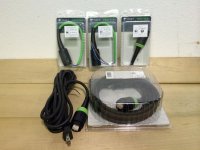 photo 2.jpg250.1 KB · Views: 32,492
photo 2.jpg250.1 KB · Views: 32,492 -
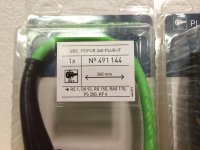 photo 3.jpg231.9 KB · Views: 27,996
photo 3.jpg231.9 KB · Views: 27,996 -
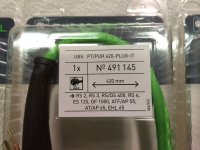 photo 4.jpg233.9 KB · Views: 26,043
photo 4.jpg233.9 KB · Views: 26,043 -
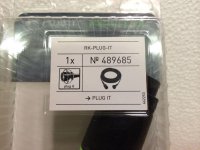 photo 5.jpg216.4 KB · Views: 26,071
photo 5.jpg216.4 KB · Views: 26,071 -
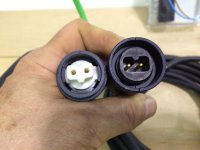 photo 7.JPG217.1 KB · Views: 27,457
photo 7.JPG217.1 KB · Views: 27,457 -
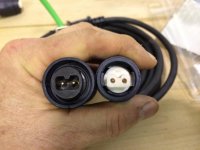 photo 8.JPG203 KB · Views: 31,238
photo 8.JPG203 KB · Views: 31,238 -
 photo 9.JPG202.7 KB · Views: 26,863
photo 9.JPG202.7 KB · Views: 26,863 -
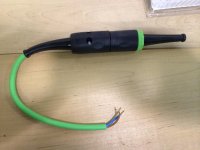 photo 11.JPG210.1 KB · Views: 36,469
photo 11.JPG210.1 KB · Views: 36,469 -
 photo 12.jpg156 KB · Views: 29,925
photo 12.jpg156 KB · Views: 29,925 -
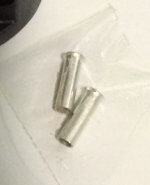 photo 13.jpg67.7 KB · Views: 25,348
photo 13.jpg67.7 KB · Views: 25,348
